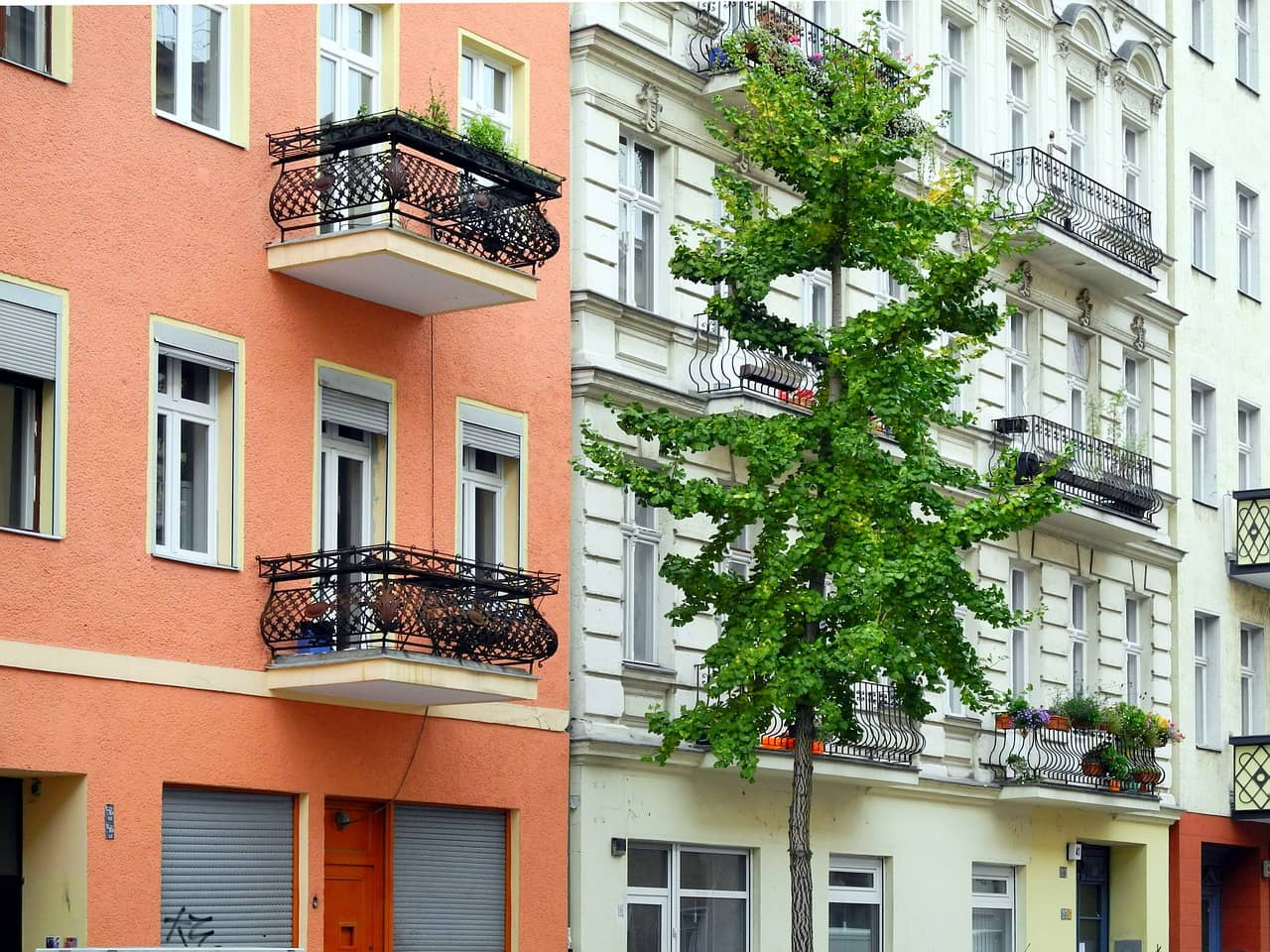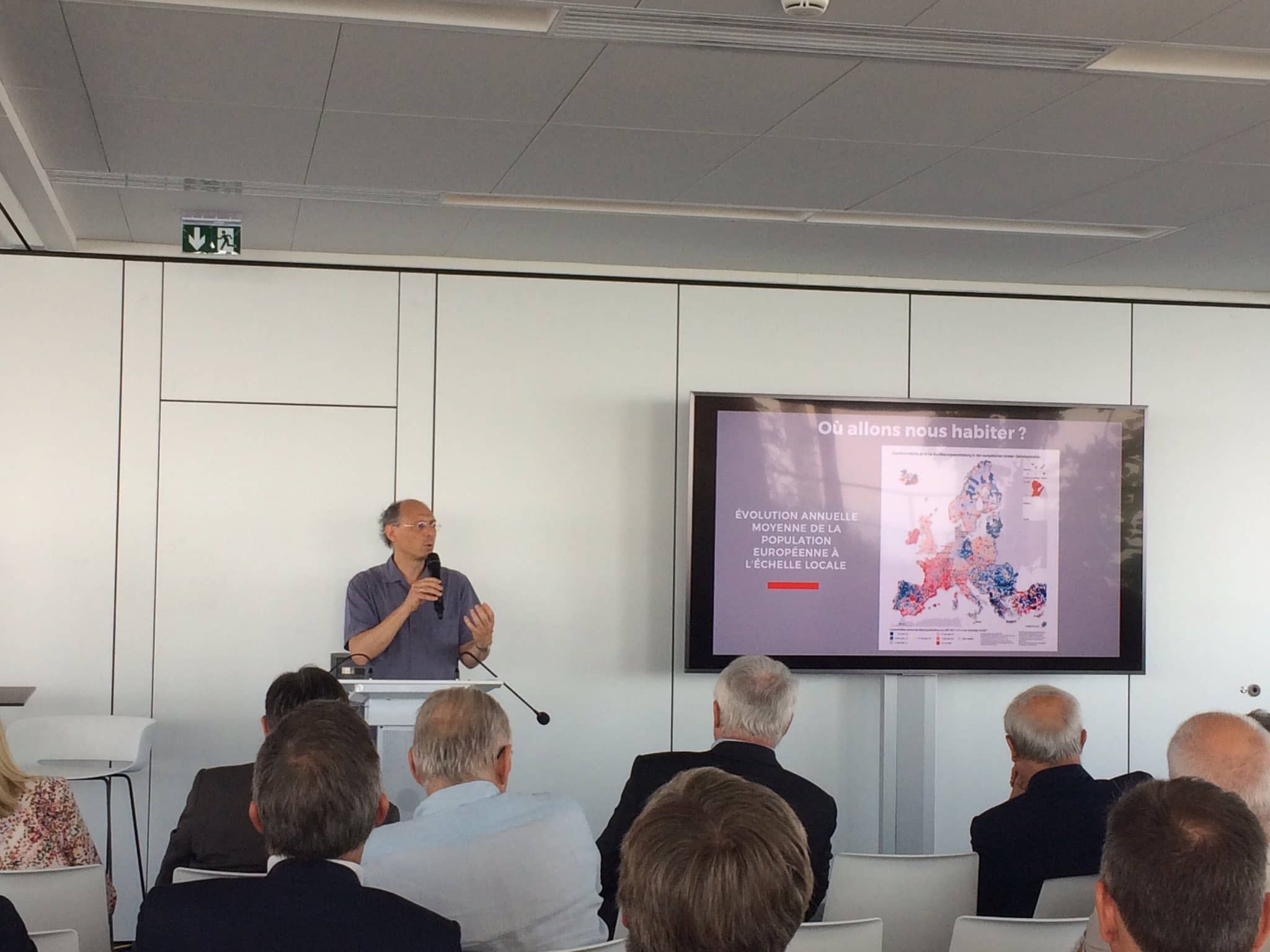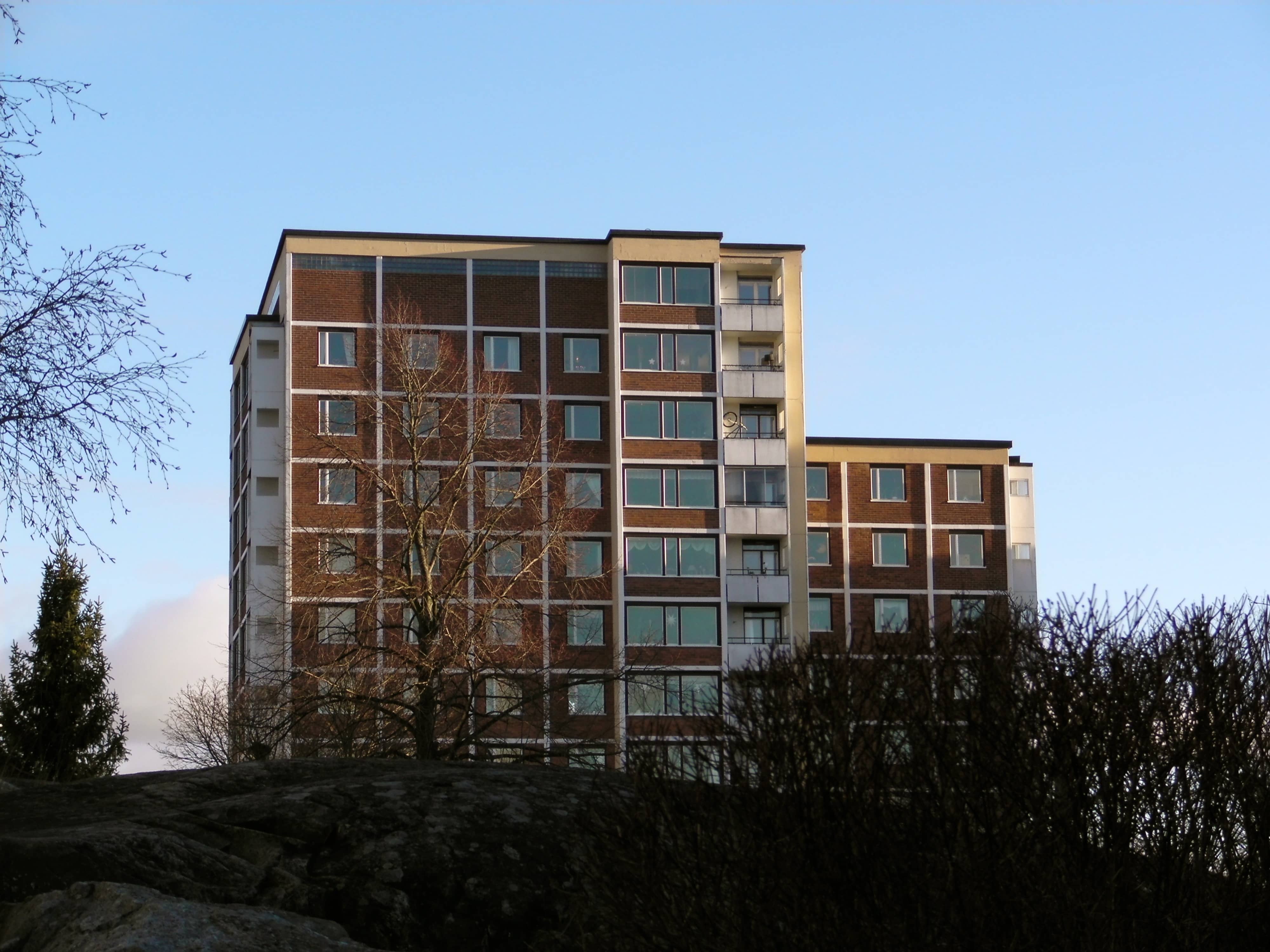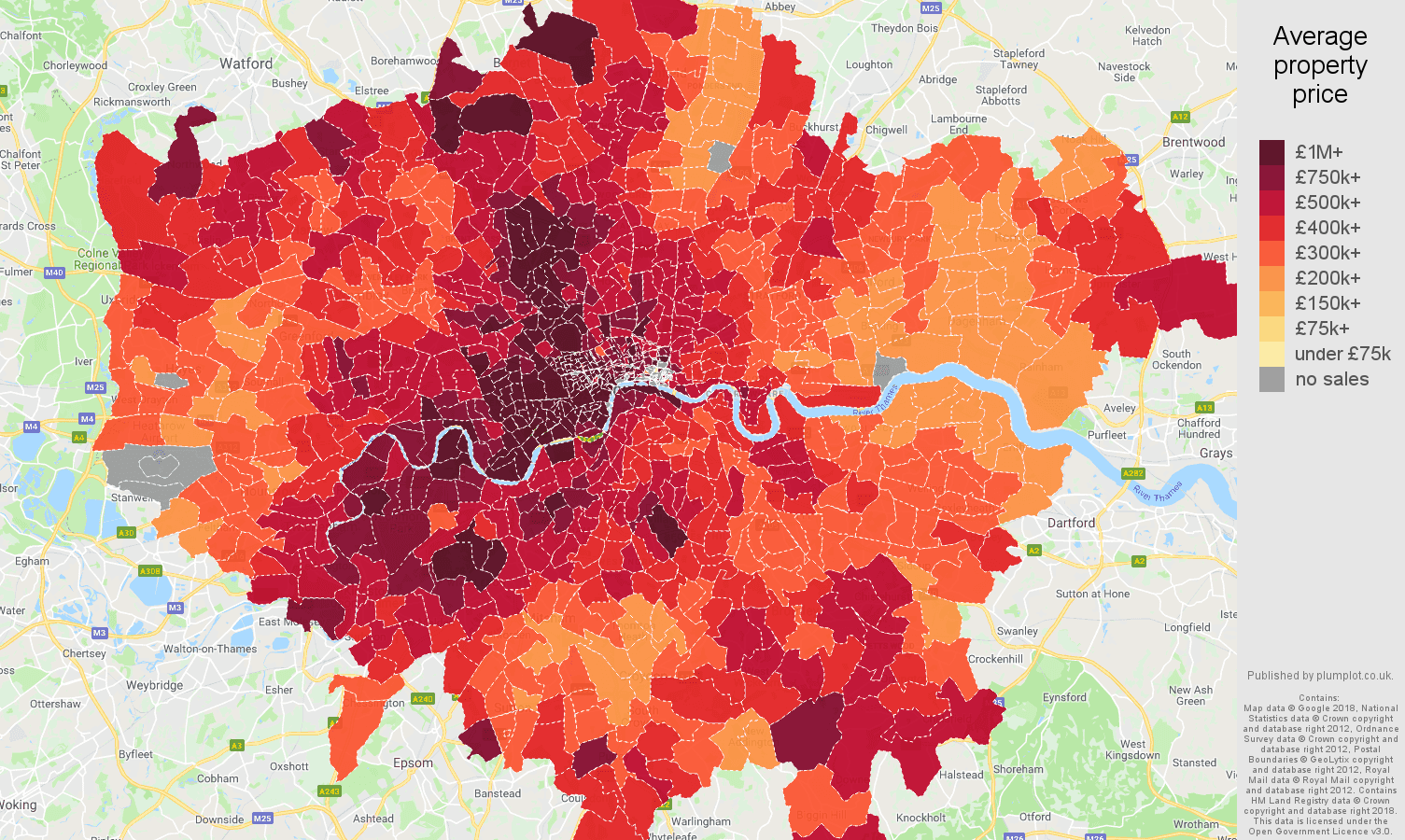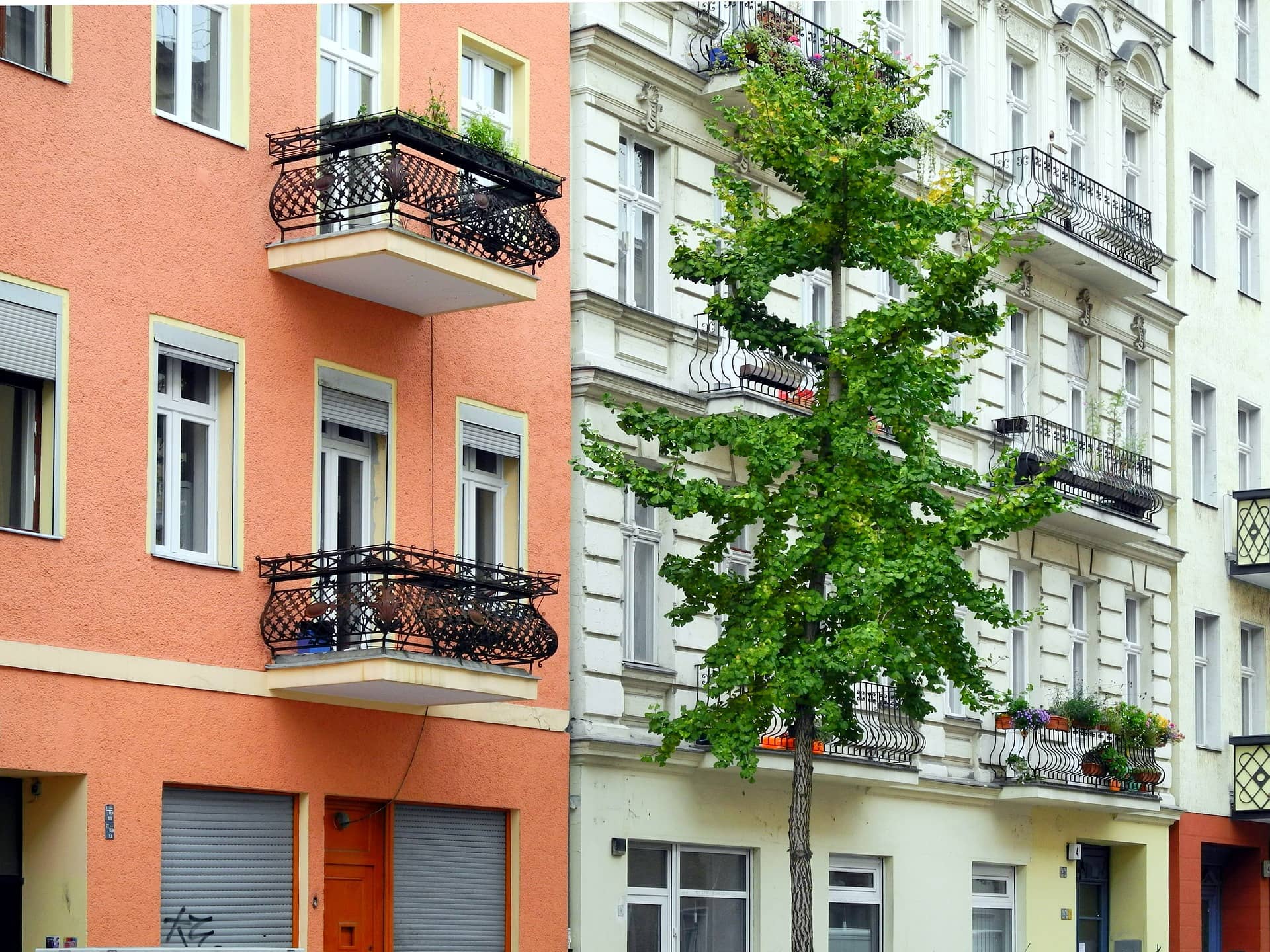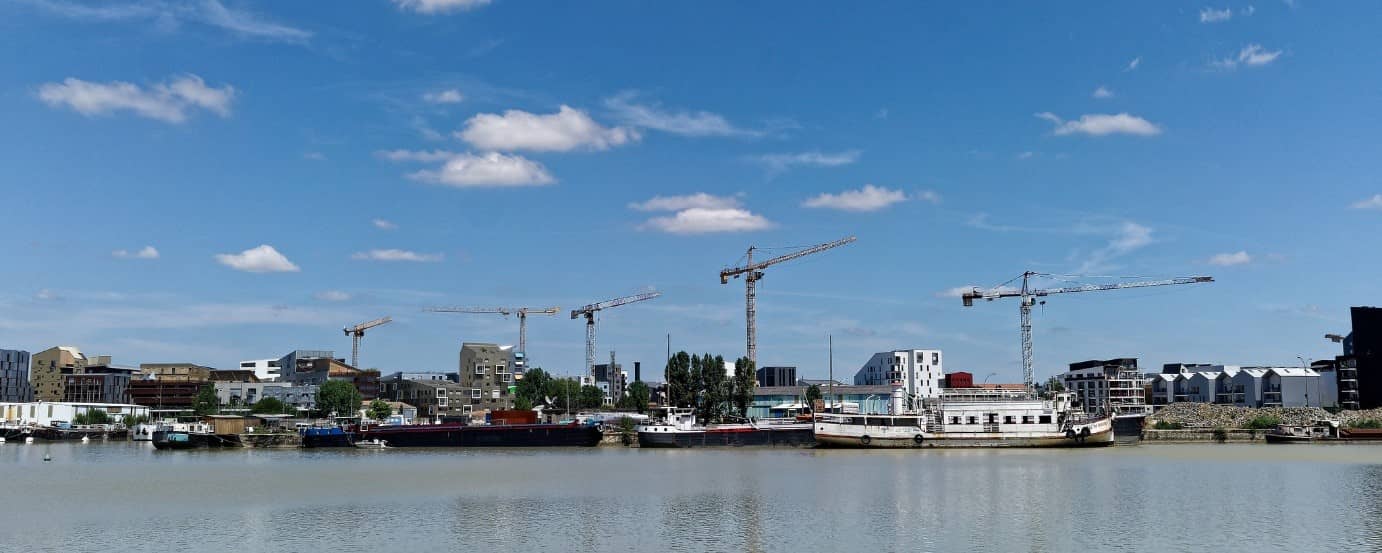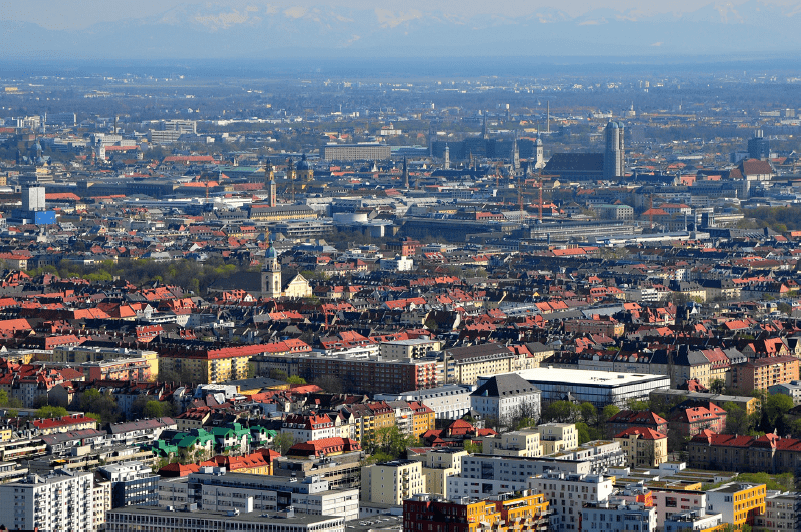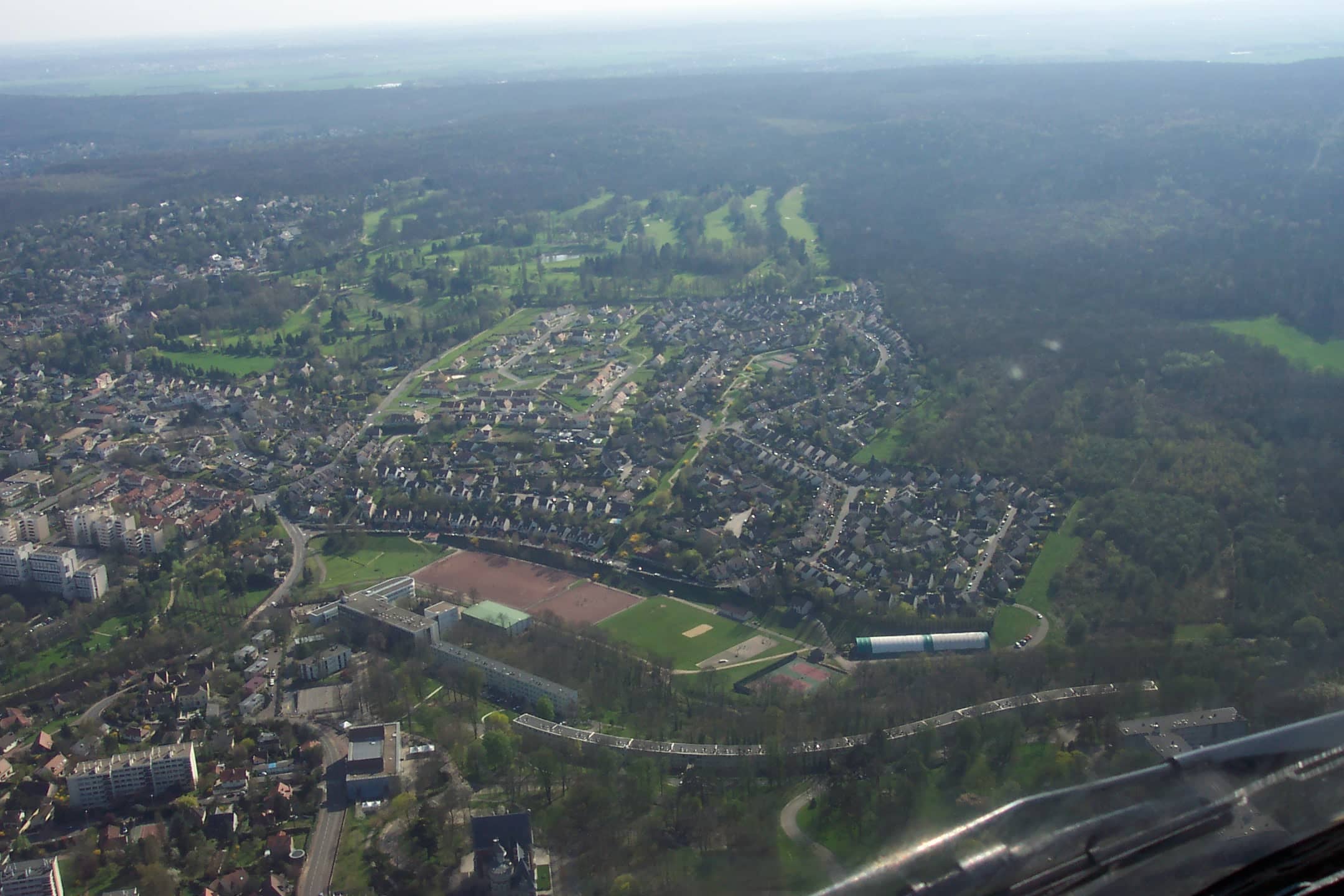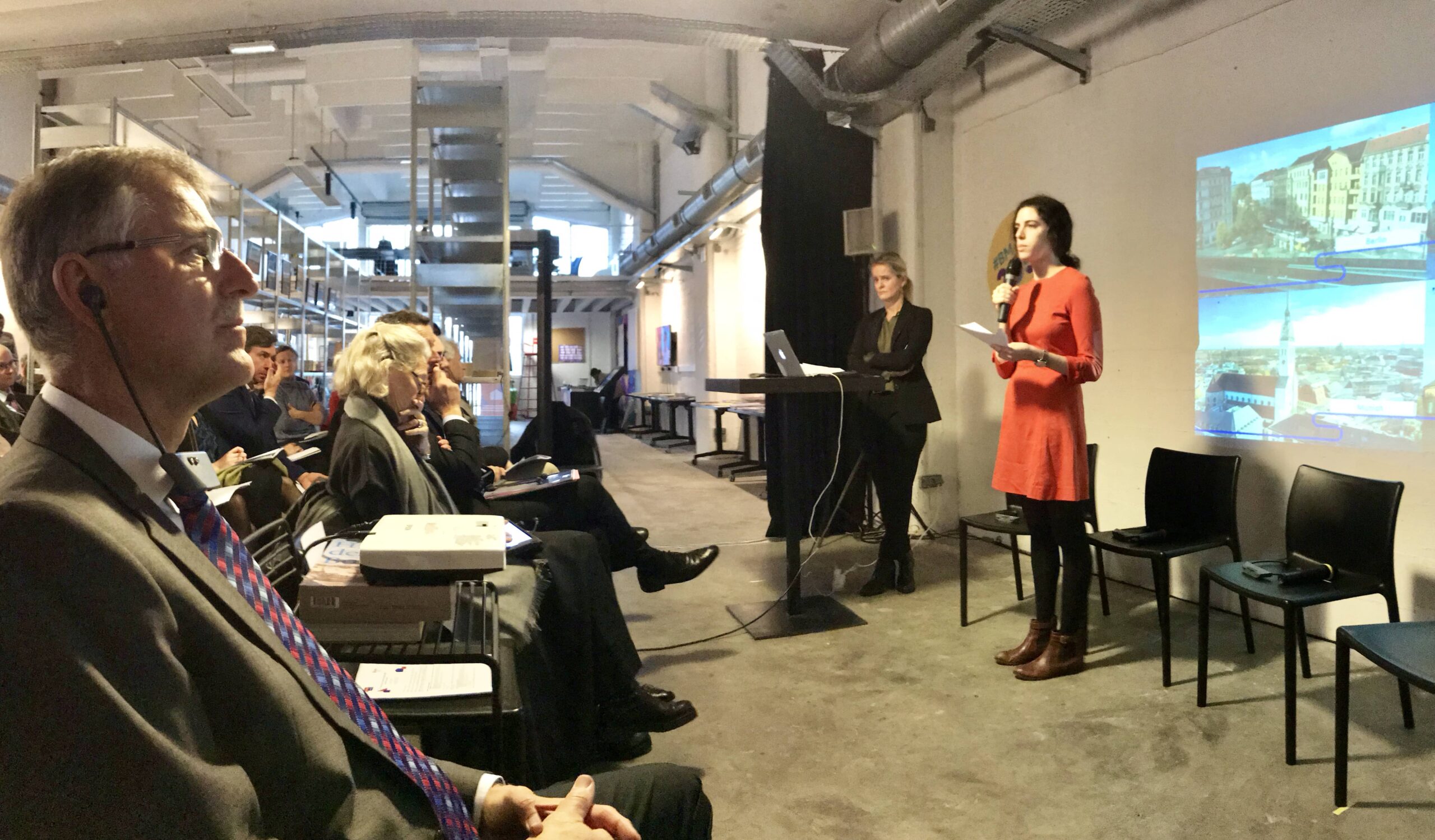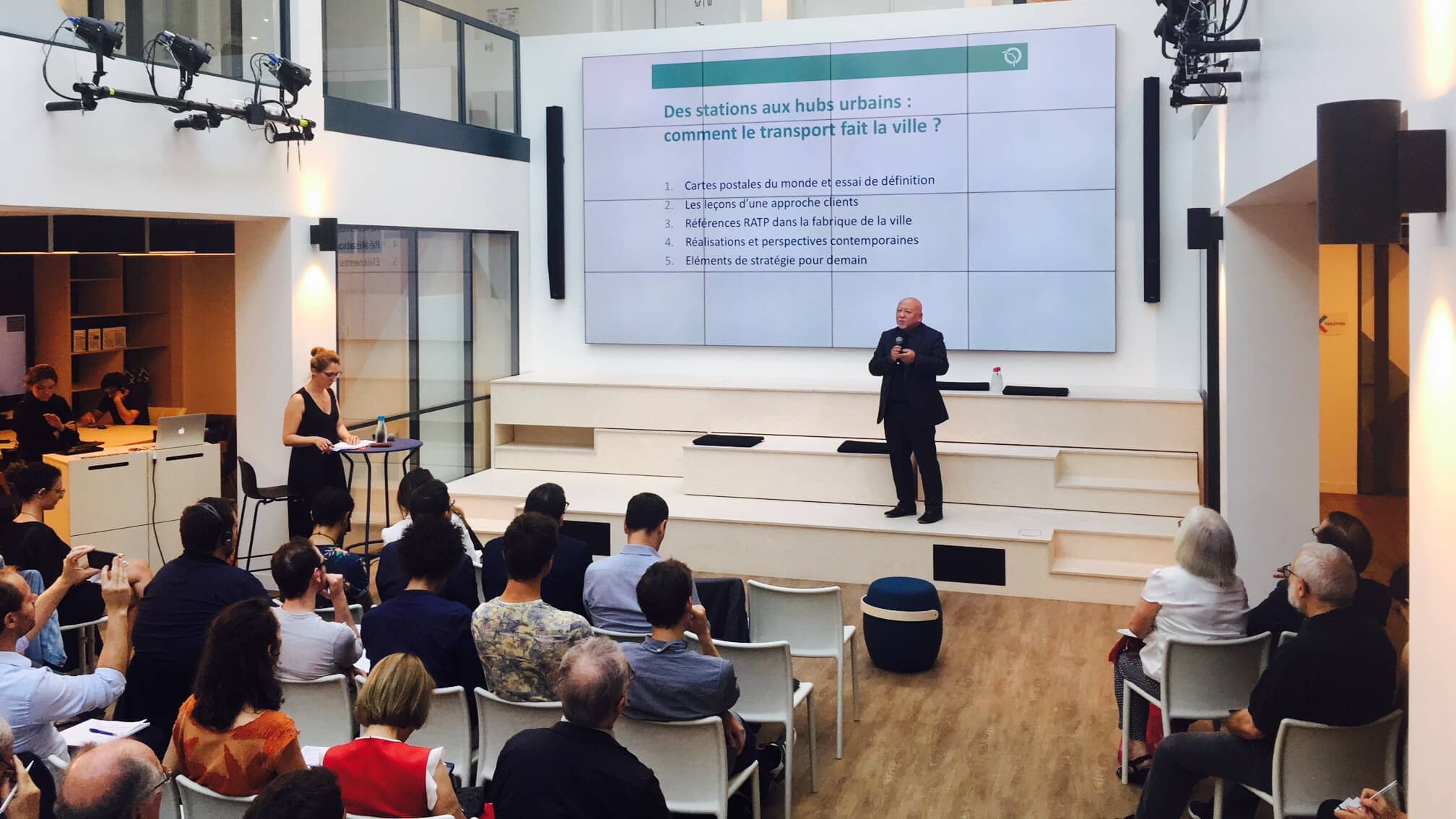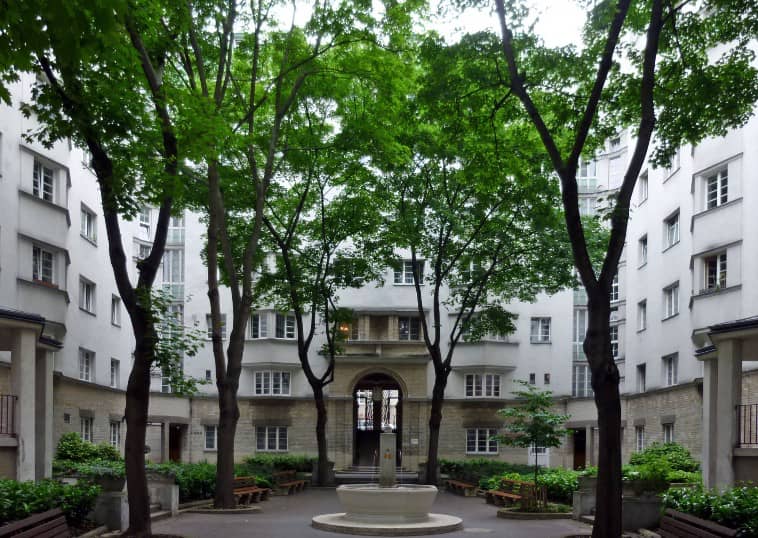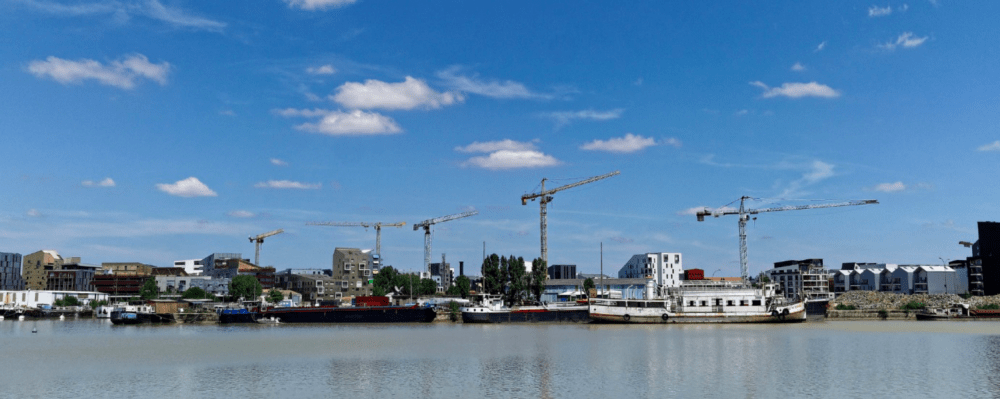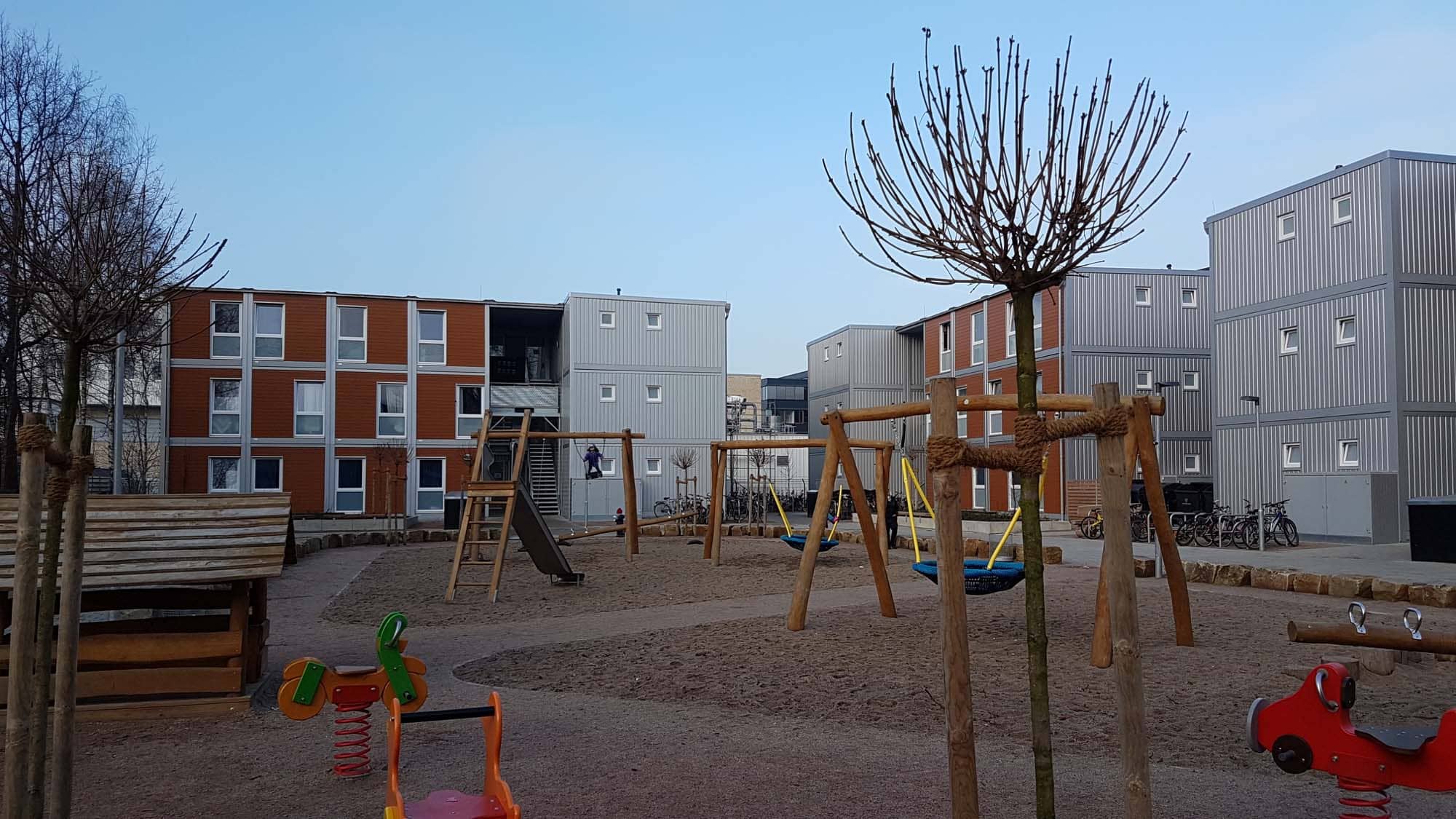

Warsaw: is there any way forward without rental housing stock?
Destruction, nationalisation, restitution: residential stock with a unique history
Warsaw’s history is marked by the uprising brought about in 1944 by the Polish resistance against the German occupation and which subjected the Polish capital to tremendous retaliation: “The city must completely disappear from the surface of the earth. […] Every building must be razed to its foundation”[1], Heinrich Himmler was quoted as saying. This was done. At the end of the War, 80% of Warsaw had disappeared. 10,000 buildings, 90% of the city’s dwellings, were destroyed[2]. Infrastructure was not spared either: “Its streets, public transport, water supply, wiring, city gas and sewage systems”[3] were severely damaged or even destroyed. While Warsaw’s population was 1.3 million inhabitants in 1938, only 380,000 inhabitants remained at the end of the War[4], during which 700,000 people were killed in the city.
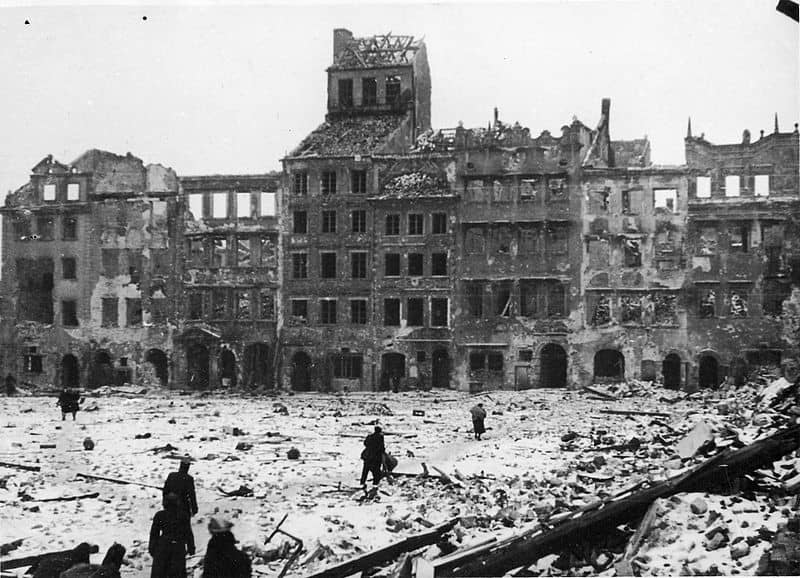
These events had long-lasting consequences for Warsaw’s residential stock. Housing that had not been destroyed was often abandoned and the owners of land on which many buildings once stood were sometimes unlocatable. “When so many of the city’s residents left to escape the violence, were forcibly removed or exterminated in concentration camps, who remains to claim ownership of land to rebuild it?”[5], writes researcher Julie Lawton. Yet “without each private owner’s consent, neither Warsaw nor the Soviet Union could redevelop the destroyed city”, she notes[6]. This state of affairs resulted in the signature of the Warsaw Decree in October 1945 by the Soviet Union (also known as the Bierut Decree), which provided that “the ownership of all real estate in Warsaw, including privately-owned property, is transferred to the municipality of Warsaw”[7]. While the authors of the Decree claimed they wished to facilitate the reconstruction of the city[8] by creating an opportunity for former owners and their legal successors to submit a claim for ownership of the property, owners only had six months following the date on which ownership was transferred to the municipality of Warsaw, an illusory timeframe given the number of people displaced by the War and a provision which served the stated goal. In any case, 98% of the formal applications submitted through the provisions of the Warsaw Decree were denied[9].
This decision in the immediate post-war period and the decades of Soviet control over Poland prior to the fall of the USSR left a lasting mark on Warsaw’s morphology, more specifically influencing the city’s housing stock considerably and for the long term. Following the War, “the communist political atmosphere […] did not only affect the city’s economic and social structure but also its physical restructuring” [10], writes Tuna Tasan, Professor at the University of Amsterdam. While the productive forces and the national economy were intentionally focused almost exclusively on industry (and in particular heavy industry), transport and agriculture, the priority and importance placed on industrialisation prevented any significant investment in housing[11]. Tuna Tasan also writes that “investments in housing were initially confined to measures aimed at using more or less demolished existing buildings as much as possible to satisfy the requirement of a minimum standard”[12].
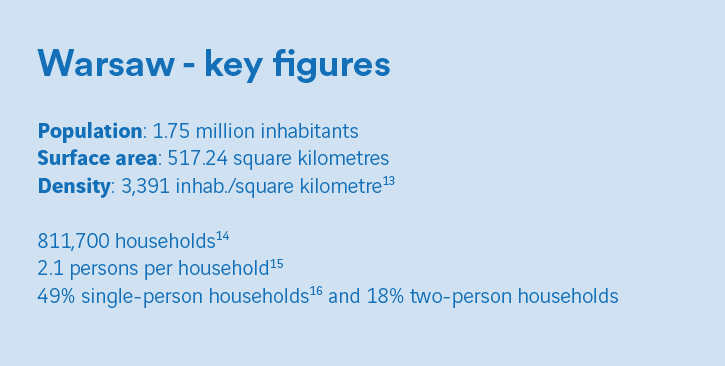
Land continues to be nationalised, yet this nationalisation is mainly focused on the city centre. Land located in what is currently Warsaw’s suburbs is often still privately owned[17]. “After the nationalisation of housing belonging to people who were killed, had disappeared or were forced to escape during the war, and of all housing units exceeding a certain size, only a small number of privately-owned apartments remained in the centre of Warsaw”, notes Tuna Tasan[18]. Housing had a number of features common to dwellings in societies subject to Soviet rule: small size, limited number of rooms, uniform architecture with the “mass construction of homogenous tower blocks”[19].
As of the fall of the Soviet Union, a period of economic and social transition began which would transform housing in Warsaw. While the local authorities were giving growing importance to the definition of urban policies in Poland, Warsaw’s architecture and landscape were undergoing a transformation. The private residential stock grew quickly[20], in particular through the implementation of a massive privatisation policy of public housing. “All State housing was given to the local government”, explains Mikolaj Lewicki, from the University of Warsaw. “Local authorities were placed at the top of this process of privatising housing built in the communist era and owned by the State, but also more generally in charge of managing housing stock”. The often somewhat hasty privatisation conducted by these municipalities came with the demolition of many buildings and premises deemed to be in excessively poor repair. This privatisation often involved selling the housing unit to the tenants at a very low price: “Basically, people were given these apartments”, notes Mikolaj Lewicki. The process of privatisation launched in the 1980s and 1990s is ongoing, but is now a process of reprivatisation: there are frequent evictions aimed at returning a property nationalised during the Soviet era to its pre-war owners or, more often, to their legal successors. The Warsaw Decree remains in force and the municipality estimates that some 447 properties (representing 4,479 occupied housing units) were returned to their former owners under the Decree between 2007 and 2016[21]. 17,000 tenants of city-owned dwellings had the properties they were living in returned to private owners[22], and this reprivatisation is sometimes a cause of social tension[23].
In recent years, Warsaw has also been experiencing slow and low levels of demographic growth (the city grew by 50,000 inhabitants between 2007 and 2016), together with a sharp rise in housing construction. Over the same period, some 151,000 housing units were built in the Polish capital, i.e. an annual average of roughly 15,000 housing units[24]. This trend is gaining momentum as in 2016, “20,120 dwellings were completed in 2016, which is 51.2% more than in 2015, when 13,306 dwellings were built”[25]. Yet 83.9% of the housing units built between 2007 and 2016 were completed by private investors and the production of public housing remains derisory (see below). The start of the 21st century marks the continuation of the Polish State’s gradual withdrawal from housing issues; the financial assistance granted to local authorities, including Warsaw, is particularly low and the share of housing in the national budget is falling.
The hegemony of owner-occupation in Warsaw and the challenge of gentrification
“In Poland, the concept of ‘affordable housing’, as other countries might understand it, does not exist. While Polish housing policy encompasses municipal housing, social housing and cooperative housing, it heavily favours the private ownership model”, write Agata Twardoch and Jakub Heciak[26]. As in many cities of the former Soviet Union, Warsaw is a city of owners. Owner-occupation has become “both a norm and an indicator of social attainment” in the city, observes Mikolaj Lewicki. This trend is bolstered through ownership incentives conducted on a State level[27]: “public intervention, very low on both national and local levels, are confined to encouraging owner-occupation”. Agata Twardoch and Jakub Heciak confirm this: “Although the legal framework of housing policy allows for a vast range of housing solutions, ownership-oriented private projects have continued to dominate the market. This reality is partly explained by the fact that Poles are firmly committed to the idea of owning their own homes”[28]. All these conditions contribute to making Poland one of the countries with the highest rates of owner-occupation in Europe (around 82%[29]).
However, income levels which are currently stagnating and the increasing inaccessibility of credit prevent young generations from acquiring their own home. They continue to live with their parents until a later age. At the same time, there is a widespread generational transmission of private properties, meaning that “the new generation is not striving for autonomy as much as the previous generation” and often properties are passed down from their parents, explains Mikolaj Lewicki.
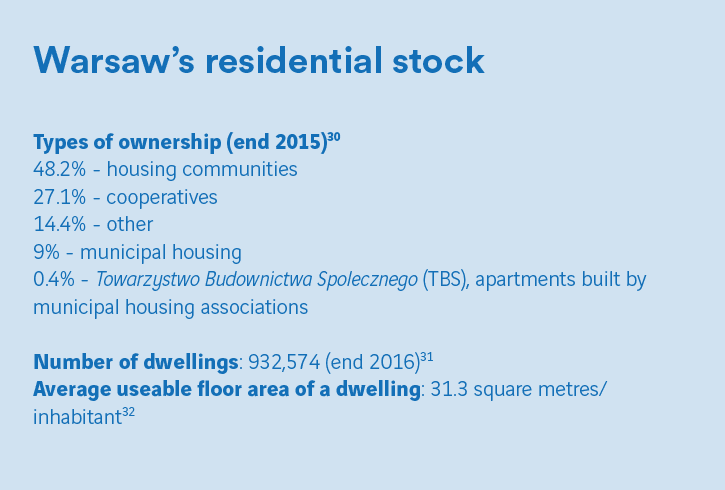
The properties currently inhabited by owner-occupiers are increasingly dilapidated. Renovating this housing stock is one of the most prominent challenges for Warsaw in terms of affordable housing: “Besides the older housing stock in the central districts of Warsaw, the extensive social housing developments on the outskirts of the city (blocks of flats made of prefabricated concrete slabs in the 1960s and 1970s) will require intensive renovation in the next years”[33]. Improving the quality of existing housing is one of the municipality of Warsaw’s priorities. The city’s housing strategy has undergone some significant developments, as presented in a document entitled “Housing 2030”. The municipality explains in this document that it intends to abandon some municipal-owned buildings in poor technical conditions as well as properties without bathrooms or kitchens. It also undertakes to ensure that all properties are connected to the central heating network. Between 2007 and 2017, the City of Warsaw spent over PLN 5.5 billion for the maintenance of municipal flats, out of which 38% is income from rent payments[34]. Another objective is to reduce the number of coal-based heating furnaces (objective of 0%) and to connect Warsaw’s apartments to the central heating network. The adoption of a Warsaw Housing Standard established by the municipality has resulted in a list of criteria to qualify a “good apartment”, taking into account a set of considerations related to spatial planning and the efficient management of resources (energy, land, water, materials and waste).

The widespread ownership transfer of Warsaw’s private properties to the next generations is one reason why it is difficult for low-income households who are not yet owners to purchase a home. This is compounded by obstacles preventing these households from obtaining a mortgage[35], resulting in some of them being pushed out of the city, fuelling a movement of gentrification[36]. One striking example of this trend is in Praga Północ, a district with approximately 70,000 inhabitants reputed for its social and economic mix. “Its diversity is reflected in both the physical, and in the social dimension. Pre-war, neglected, municipally owned tenements are neighbouring new buildings constructed by private developers. The level of unemployment and the share of social assistance beneficiaries is the highest of all of Warsaw’s districts […] At the same time, a gentrification process related to recent inflow of people representing generally a higher income and educational status is taking place”[37], notes a Divercities report. Housing is still inexpensive here and a large percentage of inhabitants have never left the district. The percentage of municipal housing is two times greater than the city’s average here. Once considered dangerous, Praga Północ is currently attracting a growing number of commercial and infrastructural investments[38] and many new residents, from the migrants who recently arrived in Poland who are looking for affordable housing to the members of the elusive “creative class”[39] cited by Richard Florida.
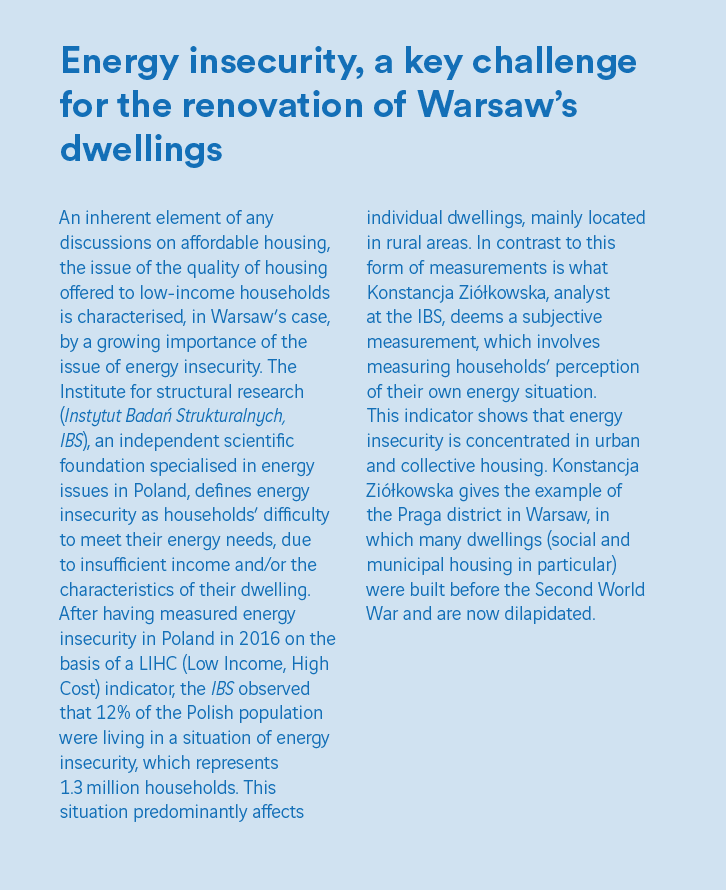
The rental sector at the centre of the affordable housing issue in Warsaw
Unable to secure a mortgage to acquire their own property, many households (in particular the youngest) are forced to fall back on Warsaw’s rental market, which is little respected in this city of owner-occupiers. Joanna Erbel notes that “the wisdom passed on from the post-communist transformation period sees private ownership as the only type of housing able to meet requirements in a safe and respectable way. Communal apartments and their tenants do not have a good image. Not being able to purchase a communal dwelling meant being the loser of the transformation period”[40]. The rental segment is partly municipal-owned, which offers Warsaw’s inhabitants a range of dwellings in four separate categories according to their personal circumstances.
Firstly, social housing is aimed at populations deemed to be subject to specific social risks and requiring public assistance and low-rent housing. The rent required of tenants of social housing may not exceed half of the lowest rent applied to municipal or council housing. The latter is the second form of public housing in Warsaw. It is aimed at households with incomes that are too high for them to qualify for social housing but too low to allow them to become owners. The rents of council housing units are defined according to their location and furnishings. Tenancies are open-ended. A sometimes-negative corollary of this last feature, “the allocation of council housing does not take into account possible improvements in the financial situation of the tenant”[41]. Some experts are calling for the introduction of mechanisms which would enable municipalities to check that these apartments are really occupied by households requiring such assistance. This segment of the municipal-owned housing stock is currently in serious decline, as observed by the municipality itself, in particular due to the effect of reprivatisation as stated above:
“Over a 20-year period, Warsaw’s council housing stock decreased by 73,325 dwellings (from 154,888 as at the end of 1995 to 81,563 as at the end of 2016). The period of the biggest decline in the number of dwellings was 1996-2001, with a decrease of 5,500 dwellings per year. Over the following years, the average annual decrease was 2,300 dwellings […]. The rate of change in the number of council housing units was mainly influenced by two factors: the sale of dwellings to tenants and the restitution of real property to their previous owners or their successors”[42].
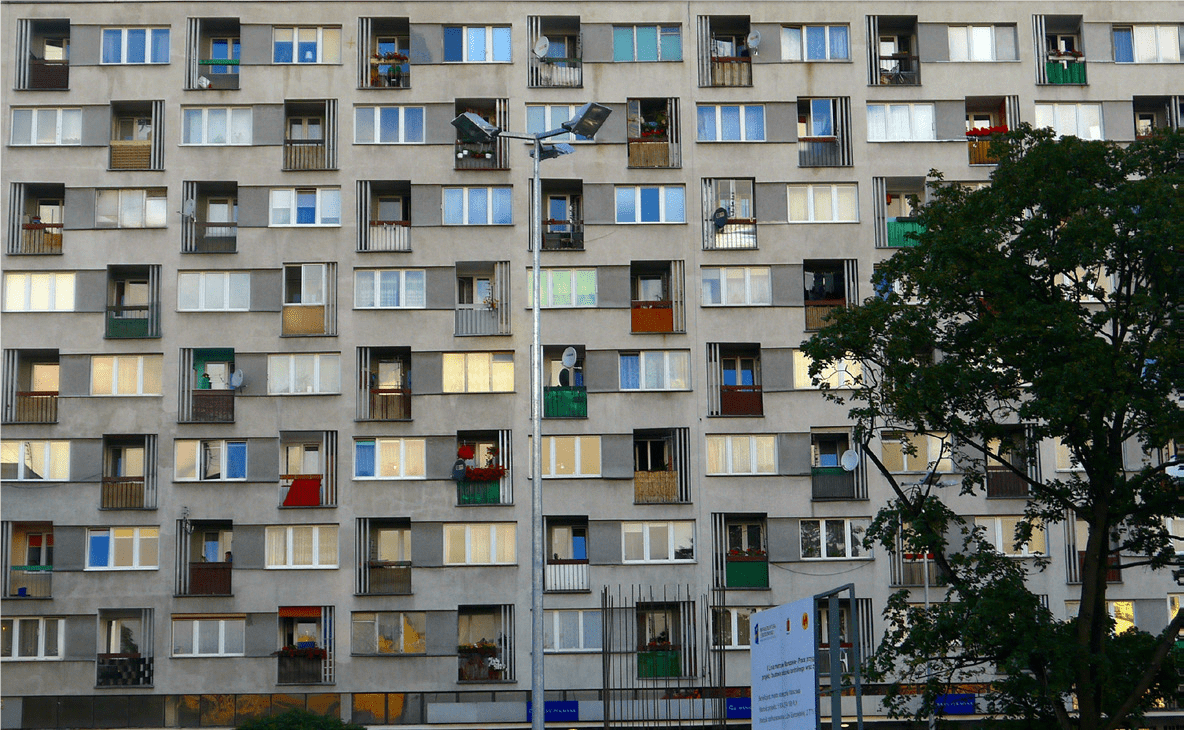
The third segment, entitled “Towarzystwo Budownictwa Spolecznego” (TBS), represents apartments built by municipal housing associations, aimed at households with incomes exceeding the eligibility thresholds for the two previous housing categories. Once again, the aim is to meet the needs of households who are unable to purchase their own home, as the municipality explains: “This solution will provide dwellings to families who cannot be granted council flats due to their income but do not have the creditworthiness to purchase their own dwellings, or are not interested in doing so”[43]. The wording of this phrase provides proof, if proof were needed, of the perceived superiority of ownership over other types of housing. The construction of TBS housing is financed by public funds. The public bank “Bank Gospodartswa Krajowego” (BGK) provides the majority of the funding for this type of public housing, the remainder coming from TBS associations’ own funds.
Lastly, the municipality of Warsaw offers dwellings for commercial rental, with short- or long-term leases, to households with incomes which exceed the criteria of eligibility for the three other aforementioned categories. This type of housing is “primarily dedicated to young people to foster their professional and general mobility, and [to] citizens from older age groups, whose residential needs become smaller as their children move out”[44].
Most of the growth in the number of dwellings in Warsaw (see above) is unrelated to this municipal stock. Sociologist Joanna Erbel notes that “most of the investments are made by commercial companies, for the municipality of Warsaw, the production of more affordable rental housing units is therefore a real challenge”[45]. Increasing the overall size of the municipal housing stock is one of the municipality’s priorities today. It notes that “by 2030, the housing stock is expected to increase to 100,000 dwellings”[46]. On 14 December 2017, the city of Warsaw adopted a multi-year housing resource management plan (2018-2022), confirming its desire to step up municipal housing construction: “The city will continue to build municipal-owned flats. At least 600 housing units will be built in the years to come due to district investments, while over 1400 new flats will be provided thanks to the Communal Building Societies”[47]. This construction strategy has modest ambitions and one of the objectives is to assist households affected by the reprivatisation process.
While this stock must be developed to provide low-income households, unable to purchase a home, the option of continuing to live in Warsaw, it also requires significant renovation, as do private dwellings. The municipality notes that:
“Most city-owned buildings were constructed before World War Two […] and often require substantial expenditures. The remedial measures will be aimed at: eliminating the delays in renovations […], improving the quality of buildings and dwellings (renovation, upgrading, adding missing utilities, including heating network connection, new devices and rooms); improving the energy performance of buildings”[48].
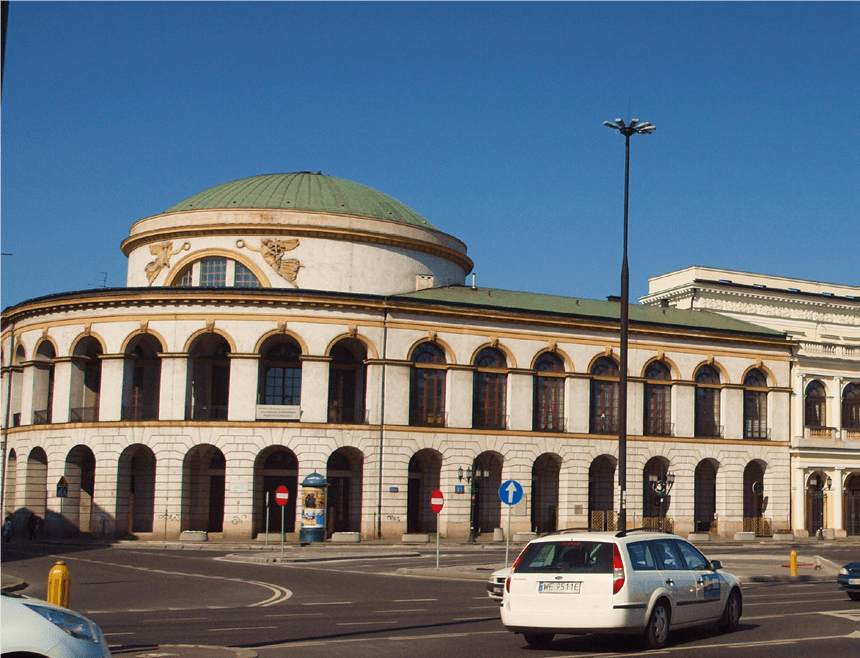
Whether private or public, the rental segment remains a minority form of housing in Warsaw. It has an image of instability and insecurity which still contributes to its lack of popularity. The reasons behind this are the legal framework which barely protects tenants of private dwellings, tenancies of very limited durations (one to two years) and the great latitude granted to private owners. Mikolaj Lewicki confirms that Warsaw’s inhabitants see rental housing as “not comfortable, not a source of security but an only temporary situation”, and observes that, “one of the biggest challenges for the rental market in terms of social and cultural positioning is to give this idea that it can be stable and comfortable”. For now, the poorest households of the Polish capital are reluctantly concentrated in rental housing. “People who rent are those who are much less stable in terms of their income, much less stable in terms of their social status”, explains Mikolaj Lewicki. A consequence of the fragile economic situation of these tenants is the increasing number of rents which are paid late or which are outstanding: “At the end of 2011 the proportion of homes in council and social housing in which tenants were in arrears in payments was as high as 41 percent”[49], writes Dorota Mantey. This situation also occurs alongside a constant increase in rental debt, that the municipality has identified, because it has made its reduction one of the priorities of its housing policy. The “Housing 2030” strategic plan states that “the City of Warsaw will continue its activities preventing rent debt by regularly monitoring outstanding rent to quickly provide assistance to people in difficult life situations”[50]. Yet perhaps Warsaw’s residential stock needs above all a clear change in perception achieved through a clear policy to promote rental housing, according to Mikolaj Lewicki. While the municipality does not yet seem to be working on changing the negative image of rentals, the Polish State is giving this greater importance, as Joanna Erbel describes:
“For several years, taking out a mortgage was considered a reasonable choice for many young families, encouraged by national housing programmes to take out such a loan (Rodzina na Swoim) or to purchase new apartments in cheaper (often suburban) areas (Mieszkanie Dla Młodych). In 2015, the situation changed with the new national housing programme, the main objective of which is to support the construction of affordable housing (Mieszkanie+ – Housing+)”[51].

The affordable nature of such housing is itself increasingly contested, while it is currently estimated that paying off mortgage instalments is less expensive, for Warsaw’s inhabitants, than a monthly rent. The city of Warsaw would therefore benefit from focusing in the coming decades on stemming rent increases, protecting the tenants of reprivatised properties and developing the stock of municipal rental housing intended for those households whose income does not allow them to purchase a home. The key to this is to combat gentrification and the negative effects of the reprivatisation operations conducted over the last few decades and to give hope to young low-income households that they can build their future in Warsaw.
[1] LAWTON, Julie. Warsaw Rebuilt: Incorporating Affordable Housing by Design. Studia Iuridica [on-line]. 2015, vol. LXIII, 13 p. Available at: https://papers.ssrn.com/sol3/Delivery.cfm/SSRN_ID2839526_code1892983.pdf?abstractid=2690439&mirid=1. (Viewed on 16 July 2018)
[2] DAVIES, Christian. ‘They stole the soul of the city’: how Warsaw’s reprivatisation is causing chaos. In: The Guardian [on-line]. (Published on 18 December 2017.) Available at: https://www.theguardian.com/cities/2017/dec/18/stole-city-soul-warsaw-reprivatisation-chaos (Viewed on 16 July 2018)
[3] TASAN, Tuna. Warsaw under transformation: new tendencies in the housing market. GeoJournal [on-line]. 1999, n°49, p. 91-103. Available at: https://link.springer.com/article/10.1023/A:1007037619915 (Viewed on 18 July 2018)
[4] LAWTON, Julie. Warsaw Rebuilt: Incorporating Affordable Housing by Design. Studia Iuridica [on-line]. 2015, vol. LXIII, 13 p. Available at: https://papers.ssrn.com/sol3/Delivery.cfm/SSRN_ID2839526_code1892983.pdf?abstractid=2690439&mirid=1. (Viewed on 16 July 2018)
[5] Ibid.
[6] Ibid.
[7] Ibid.
[8] Ibid.
[9] Ibid.
[10] TASAN, Tuna. Warsaw under transformation: new tendencies in the housing market. GeoJournal [on-line]. 1999, n°49, p. 91-103. Available at: https://link.springer.com/article/10.1023/A:1007037619915 (Viewed on 18 July 2018)
[11] Ibid.
[12] Ibid.
[13] Resolution No. LIX/1534/2017 of the Warsaw Municipal Council dated 14 December 2017 on the adoption of the “Housing 2030” housing policy for the city of Warsaw.
[14] DREMSEK, A./PRAMMER-WALDHÖR, M./STÄDTNER, K./WAGNER-PINTER, M. Housing and Housing Policies
in 14 Large European Cities – Results of a comparative monitoring system. Housing and Housing Policies in Large Cities. [on-line]. 2011, 30 p. Available at: http://www.wohnbauforschung.at/index.php?inc=download&id=5762 (Viewed on 17 July 2018)
[15] Ibid.
[16] Ibid.
[17] TASAN, Tuna. Warsaw under transformation: new tendencies in the housing market. GeoJournal [on-line]. 1999, n°49, p. 91-103. Available at: https://link.springer.com/article/10.1023/A:1007037619915 (Viewed on 18 July 2018)
[18] Ibid.
[19] Ibid.
[20] Ibid.
[21] DAVIES, Christian. ‘They stole the soul of the city’: how Warsaw’s reprivatisation is causing chaos. In: The Guardian [on-line]. (Published on 18 December 2017.) Available at: https://www.theguardian.com/cities/2017/dec/18/stole-city-soul-warsaw-reprivatisation-chaos (Viewed on 16 July 2018)
[22] Ibid.
[23] Poland’s reclaimed properties create scars across Warsaw. In: The Financial Times [on-line]. (Published on 24 April 2018.) Available at: https://www.ft.com/content/3f1f6972-430c-11e8-93cf-67ac3a6482fd (Viewed on 18 July 2018)
[24] Resolution No. LIX/1534/2017 of the Warsaw Municipal Council dated 14 December 2017 on the adoption of the “Housing 2030” housing policy for the city of Warsaw.
[25] Ibid.
[26] TWARDOCH, A./HECIAK, J. Affordable housing in Poland – the study of a non-existent sector [on-line]. Zurich: ETH Zürich, 9 p. Available at: https://www.ethz.ch/content/dam/ethz/special-interest/conference-websites-dam/no-cost-housing-dam/documents/TwardochHeciak_final.pdf. (Viewed on 17 July 2018)
[27] In 2016, the Polish State implemented, for example, “Home Plus”, a programme in favour of affordable housing, the main aim of which is again to encourage owner-occupation, to the detriment of rentals. The programme aims to provide inexpensive public land to lower the cost of purchasing a property for families. These owner-occupier families then have 25 years to reimburse the property’s construction price.
[28] Ibid.
[29] HARAN, L./KALDI, M. Le parc de logements – Fiche d’analyse de l’observatoire des territoires [on-line]. Paris: Commissariat général à l’égalité des territoires, 2017, 22 p. Available at: http://www.observatoire-des-territoires.gouv.fr/observatoire-des-territoires/sites/default/files/Fiche-OT-le%20parc%20de%20logements_0.pdf. (Viewed on 18 July 2018)
[30] Resolution No. LIX/1534/2017 of the Warsaw Municipal Council dated 14 December 2017 on the adoption of the “Housing 2030” housing policy for the city of Warsaw.
[31] Ibid.
[32] Ibid.
[33] DREMSEK, A./PRAMMER-WALDHÖR, M./STÄDTNER, K./WAGNER-PINTER, M. Housing and Housing Policies in 14 Large European Cities – Results of a comparative monitoring system. Housing and Housing Policies in Large Cities. [on-line]. 2011, 30 p. Available at: http://www.wohnbauforschung.at/index.php?inc=download&id=5762 (Viewed on 17 July 2018)
[34] http://www.um.warszawa.pl/en/Highlights/flats-warsaw-residents-plans-upcoming-years
[35] Currently, very few households in Warsaw have taken out such a loan.
[36] Defined by ENS Lyon as a “process of renewal of a district’s social and demographic composition to the benefit of wealthier households”.
[37] KORCELLI-OLEJNICZAK, E./BIERZYŃSKI, A./DWORZAŃSKI, P./GROCHOWSKI, M./ PIOTROWSKI, F./ WĘCŁAWOWICZ, G. DIVERCITIES – Dealing with Urban Diversity: The Case of Warsaw [on-line]. DIVERCITIES, 2017, 178 p. Available at: https://www.urbandivercities.eu/wp-content/uploads/2017/02/Divercities-City-Book-Warsaw.pdf. (Viewed on 18 July 2018)
[38] Ibid.
[39] Ibid.
[40] ERBEL, Joanna. Housing affordable for everyone. New housing policy for 2030. Zurich: ETH Zürich, 8 p. (Viewed on 23 July 2018)
[41] MANTEY, Dorotea. Council and social housing in Poland. Global Tenant [on-line]. 2017, p.8. Available at: http://www.iut.nu/wp-content/uploads/2017/03/Council-and-Social-Housing-in-Poland.pdf (Viewed on 16 July 2018)
[42] Resolution No. LIX/1534/2017 of the Warsaw Municipal Council dated 14 December 2017 on the adoption of the “Housing 2030” housing policy for the city of Warsaw.
[43] Ibid.
[44] Ibid.
[45] ERBEL, Joanna. Housing affordable for everyone. New housing policy for 2030. Zurich: ETH Zürich, 8 p. (Viewed on 23 July 2018)
[46] Resolution No. LIX/1534/2017 of the Warsaw Municipal Council dated 14 December 2017 on the adoption of the “Housing 2030” housing policy for the city of Warsaw.
[47] http://www.um.warszawa.pl/en/Highlights/flats-warsaw-residents-plans-upcoming-years
[48] Resolution No. LIX/1534/2017 of the Warsaw Municipal Council dated 14 December 2017 on the adoption of the “Housing 2030” housing policy for the city of Warsaw.
[49] MANTEY, Dorotea. Council and social housing in Poland. Global Tenant [on-line]. 2017, p.8. Available at: http://www.iut.nu/wp-content/uploads/2017/03/Council-and-Social-Housing-in-Poland.pdf (Viewed on 16 July 2018)
[50] Resolution No. LIX/1534/2017 of the Warsaw Municipal Council dated 14 December 2017 on the adoption of the “Housing 2030” housing policy for the city of Warsaw.
[51] ERBEL, Joanna. Housing affordable for everyone. New housing policy for 2030. Zurich: ETH Zürich, 8 p. (Viewed on 23 July 2018)
These other publications may also be of interest to you:

Helsinki : Planning innovation and urban resilience

Forget 5th Avenue

Long live urban density!
The ideal culprit
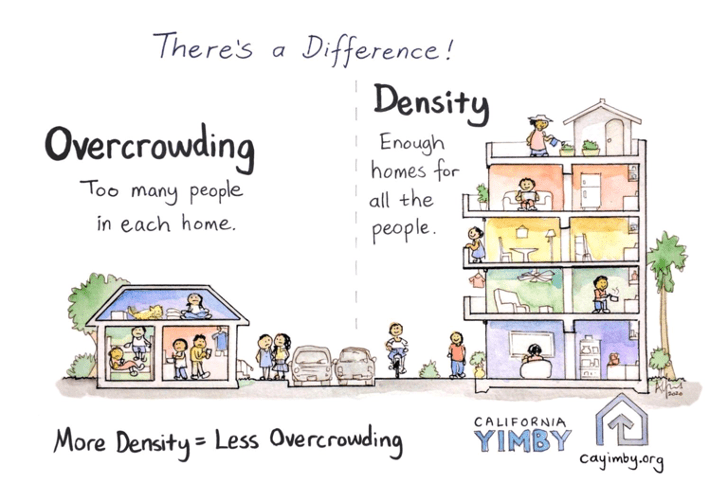
Behind the words: density

Behind the words: Affordable housing

German metropolises and the affordable housing crisis

Berlin Focus
La Fabrique de la Cité
La Fabrique de la Cité is a think tank dedicated to urban foresight, created by the VINCI group, its sponsor, in 2010. La Fabrique de la Cité acts as a forum where urban stakeholders, whether French or international, collaborate to bring forth new ways of building and rebuilding cities.















